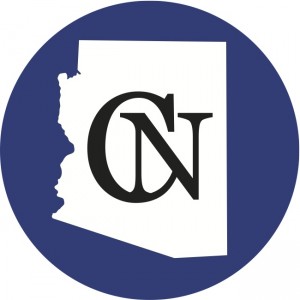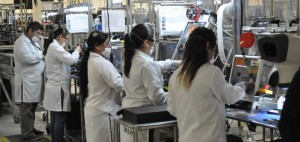By Jessica Boehm
Cronkite News Service
PHOENIX – Putting herself through school, Shayna Stevens relies heavily on student loans to pursue a degree in secondary education at Northern Arizona University.
Currently a sophomore, Stevens said she is already $40,000 in debt. She works part-time during the school year and plans to take two jobs over the summer to keep that amount as manageable as possible.
“If I didn’t have to take out these loans then I wouldn’t have to work all these extra jobs on the side and I could focus more on my studies and actually getting the education that I’m paying for,” Stevens said.
Things won’t be getting any easier next year. Unless Congress acts before July 1, interest rates on subsidized student loans, for which students must demonstrate financial need, will rise from 3.4 percent to 6.8 percent.
Students don’t have to pay interest on subsidized loans while in school. Unsubsidized loans, which currently have a 6.8 percent interest rate, require students to pay interest on loans from the start.
Stevens, who has both types of loans, said she plans to finish her education but has concerns about her peers. She said she already has seen friends drop out of NAU after realizing that the financial burden would be too much.
“I think there’s definitely going to be a huge drop out from students who just can’t afford to take on these loans anymore,” Stevens said.
Serena Unrein, public interest advocate with the Arizona Public Interest Research Group, said the average Arizona student borrower will pay $1,000 more in interest if the rates double.
Jennifer Johnson, a senior at Arizona State University who took out subsidized loans throughout college, said that with the current interest rates she will be paying close to $2,000 in interest over a 10-year period.
“Doubling it to $4,000, I just can’t even imagine,” Johnson said.
Ann-Eve Pedersen, president of the Arizona Education Parent Association, said that she has talked with parents who won’t be able to send their children to college because of the rising cost not just of loans but tuition.
“We’re just making higher education unaffordable, but we know that all of the quality jobs now and definitely in the future are going to require higher education, so we’re moving in the absolute wrong direction as a state,” Pedersen said.
Unrein said that the increased interest rates could also influence the decisions student make after college. She said that those with a lot of debt may choose to not go into lower-paying careers such as teaching or working for nonprofits.
“We need people to go into careers as teachers, as first responders, and if we’re saddling people with the kind of debt that makes it impossible to go into those careers then that leaves our state in a world of harm,” Unrein said.
The interest rates on subsidized loans were set to double last year as well. Just before the deadline, Congress passed a one-year extension of the 3.4 percent interest rates.
Megan McClean, director of policy and federal regulations with the National Association of Student Financial Aid Administrators, said that another one-year extension is unlikely.
“Last year, extending it for one additional year cost $1 billion, and I’m sure you know that that money is hard to come by in these particular times that we’re in,” she said.
McClean said that Congress and President Barack Obama are looking for long-term solutions. In Obama’s fiscal 2014 budget, he called for student loan interest rates to be set each year based on the current market rate.
“I think from a broader standpoint … we need to find a long-term sustainable solution versus these quick fixes,” McClean said.
Amid national discussions on college affordability, Sheila Shelton decided to return to college after 30 years. She took out subsidized loans to pay for an education degree at Phoenix College.
“If it doubles, I don’t know if I’ll be able to pay it all back,” Shelton said. “It’ll be a lifetime. I’m already over the age of the average student.”
However, Shelton said that she won’t let the increase postpone her dream of being a special education teacher.
“It’s going to be a challenge, but at this point I’m up for the challenge,” she said.
Subsidized
• Recipients must demonstrate need.
• The U.S. Department of Education pays interest: while a recipient is in school; during the six months after the recipient leaves school (only applies to loans disbursed before July 1, 2012); or during a period of deferment.
• Currently have an interest rate of 3.4 percent.
Unsubsidized
• No financial need necessary.
• Students are responsible for paying interest from the outset.
• Currently have an interest rate of 6.8 percent.
Source: Federal Student Aid Office of the U.S. Department of Education





